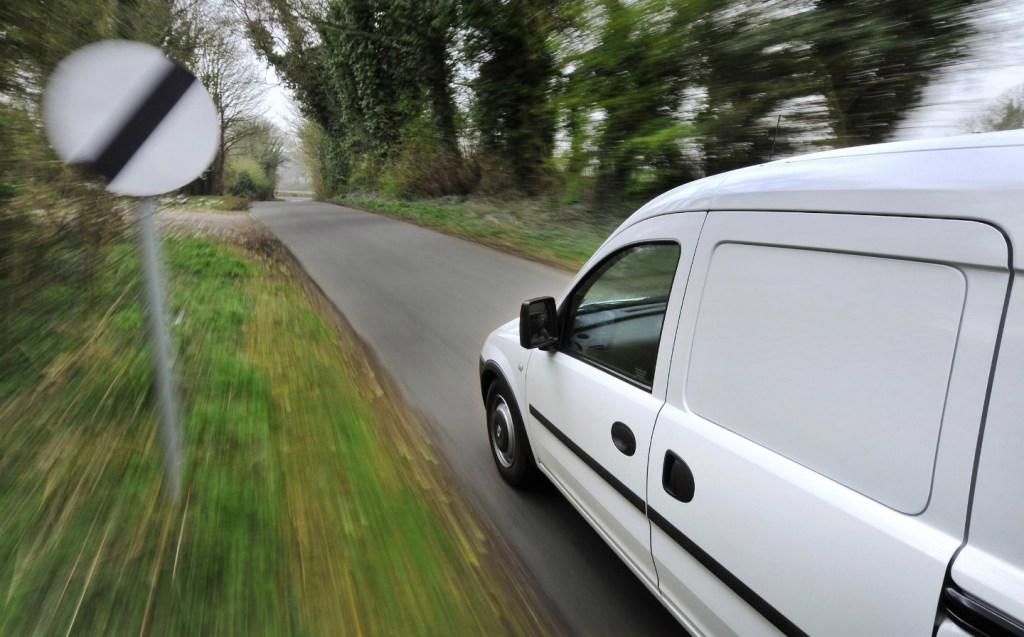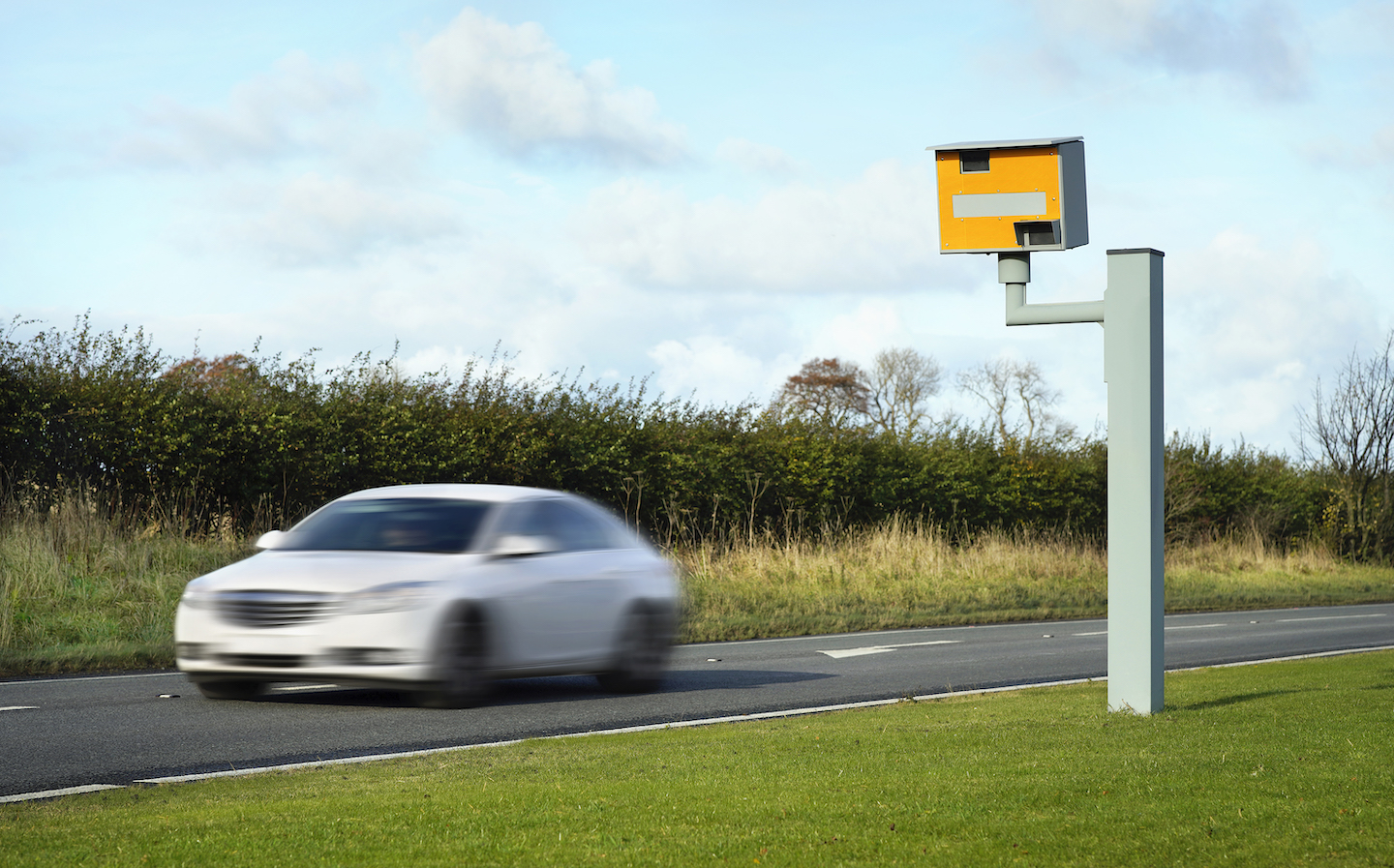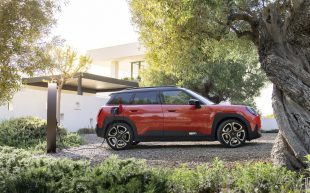Nearly half of all drivers admit to speeding on country roads
Forty-six per cent admitted breaking 20mph limits
Nearly half of UK motorists admit to speeding on rural roads according to a new survey.
The results of the 2022 RAC Report On Motoring reveal that 48 per cent of respondents have admitted to exceeding the national speed limit, a rise of four per cent over the 2021 survey.
It equals the highest number previously reported, in the survey in 2016, and is up from only a third of motorists admitting to speeding in 2020.
The national speed limit for cars on single carriageway roads (which is a road that doesn’t have a physical divider between the opposing flows of traffic) is 60mph, while for vans, trucks and vehicles towing a trailer it’s 50mph. The road sign for the national speed limit is a white circle with a diagonal black line passing across it.

The most common reason that drivers cited for speeding was that they were travelling at the same speed as other motorists, with 32 per cent of respondents putting the blame on others. The RAC attributed this rise in speeding to the renewed freedom that motorists felt following the pandemic restrictions in 2020 and 2021.
Experts also believe that motorists think there’s a low threat of being caught speeding on rural roads, while the greater safety afforded by modern cars could also be a contributing factor, making drivers feel safer at higher speeds.
The Department for Transport’s most recent figures show that 514 people were killed in crashes on rural roads with 60mph limits in 2021. This makes them the deadliest category of UK highway, despite having lower speeds than motorways and fewer users than urban roads.
Motorways are by far the safest, thanks to factors such as a lack of side turnings and slower road users, and oncoming vehicles being separated by a central reservation. In 2019 just 6% of fatalities on UK roads occurred on motorways.
Are motorways really the safest roads in the UK?
RAC road safety expert Simon Williams said: “The increase in the proportion of drivers admitting to speeding on 60mph rural roads is extremely worrying as more people lose their lives every year in collisions on these roads than on any other.
“We think the government should address the issue of fatalities on 60mph rural roads by advising authorities to reduce limits on the most dangerous stretches to more appropriate levels.”
AA Charitable Trust director, Edmund King, said: “Drivers have to be aware of the dangers on rural roads — slow-moving vehicles, mud on the road, a higher likelihood of cyclists, horse riders and ramblers, sharp bends and blind corners — and adjust their speed accordingly.
“The varied nature of rural roads means it’s very difficult to set one speed limit which is appropriate everywhere, but drivers should be aware that the speed limit is a limit, it is not a sign that 60mph is always a safe speed.”
The head of campaigns at Cycling UK, Duncan Dollimore, said that the results of the survey show that cyclists were “more at risk” on rural roads than urban ones.
“Tackling the risks on rural roads has to involve a serious discussion about reducing speed limits,” he said.
As well as admitting to speeding on rural roads, 46 per cent of survey respondents also admitted to breaking 20mph limits on urban roads. The main reason for doing so was a perception that the 20mph limit was inappropriate for the road on which they were travelling.

With more local authorities planning to introduce blanket 20mph zones in urban areas, this is another restriction to which UK motorists will need to become accustomed.
The RAC Report On Motoring had more than 3,100 respondents, all of whom held a valid UK driving licence, have access to a motor vehicle in their household and drive at least once a month.
Related articles
- After reading that half of drivers admit to speeding on country roads, you may want to read how the public wants 60mph motorway speed limits – according to a WWF survey
- And check out how motorists are being fined millions of pounds for inadvertently entering low-traffic neighbourhoods
- And did you know the penalty for speeding in 20mph roads is a postcode lottery?
Latest articles
- Omoda 5 prototype review: Bargain family SUV is solid first effort for new Chinese brand
- Dacia Duster 2024 review: Rugged, affordable SUV modernised with electrification and quite the glow up
- Audi A3 Sportback 2024 review: Softly, softly, catchy premium hatchback buyer
- New electric-only Mini Aceman fills gap between Mini Cooper hatch and Countryman SUV
- Tesla driver arrested on homicide charges after killing motorcyclist while using Autopilot
- Porsche Macan 2024 review: Sporty compact SUV goes electric, but is it still the class leader for handling?
- F1 2024 calendar and race reports: What time the next grand prix starts and what happened in the previous rounds
- Aston Martin DBX SUV gets the interior — and touchscreen — it always deserved
- Nissan unveils bold look for updated Qashqai, still made in UK














